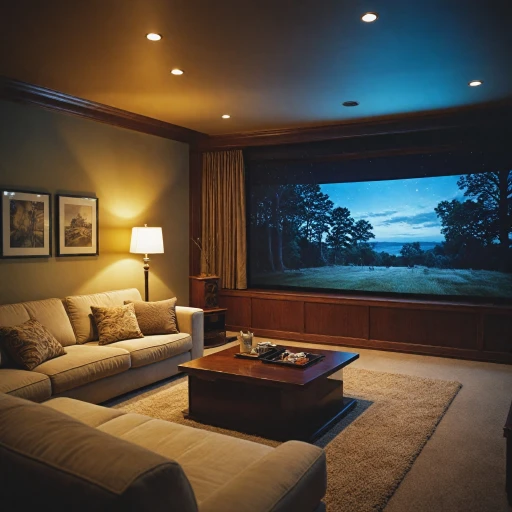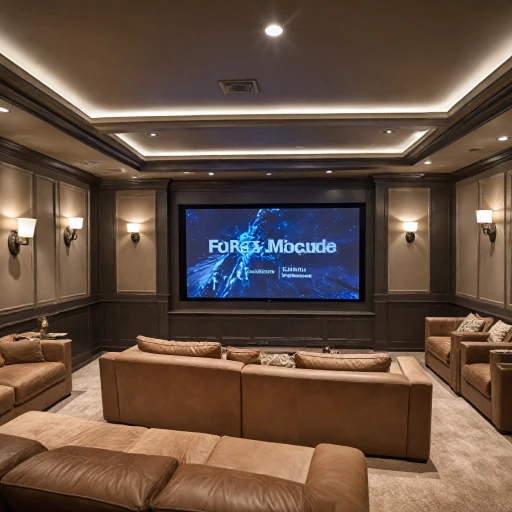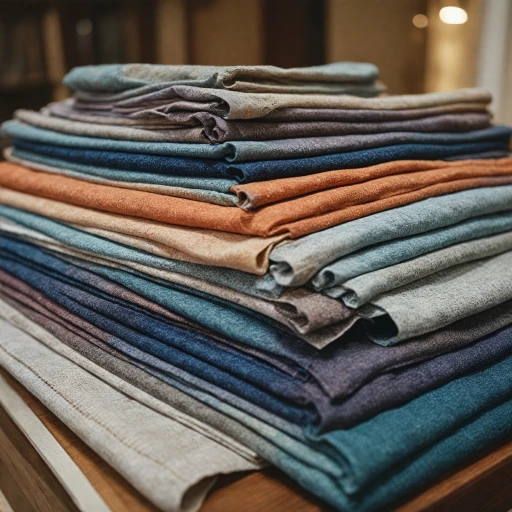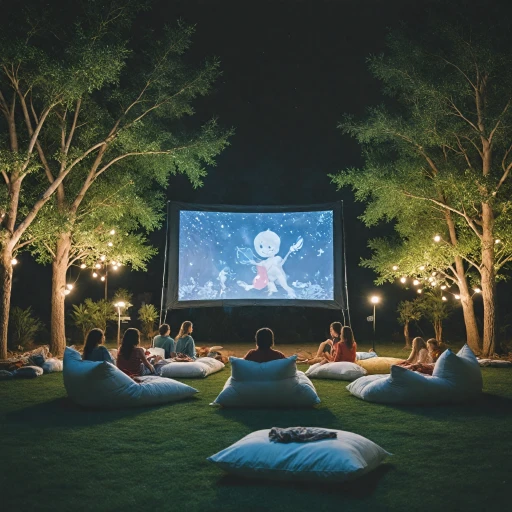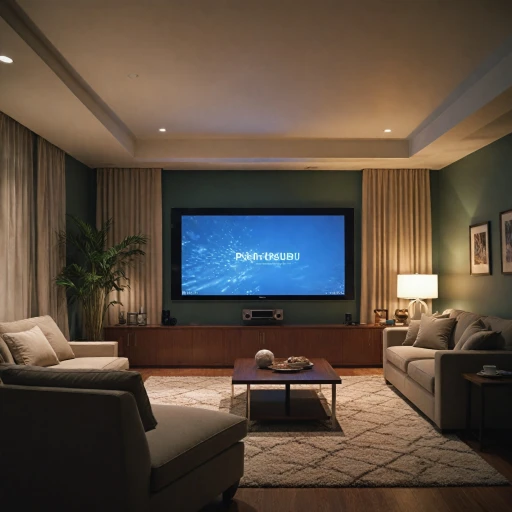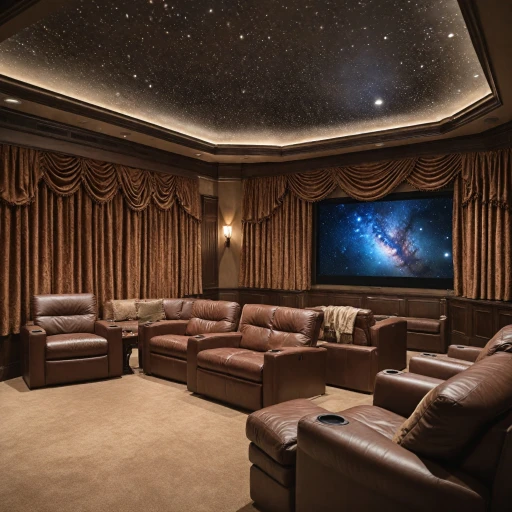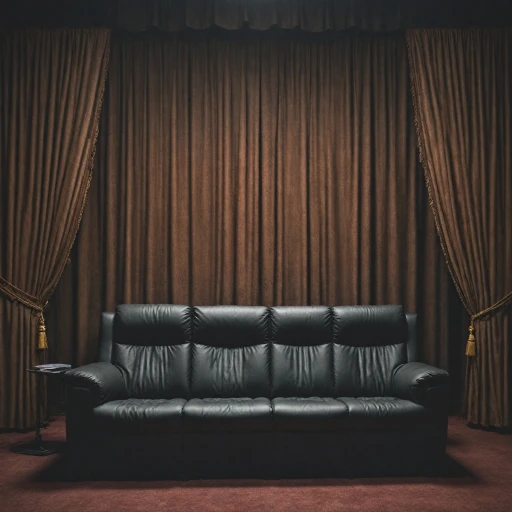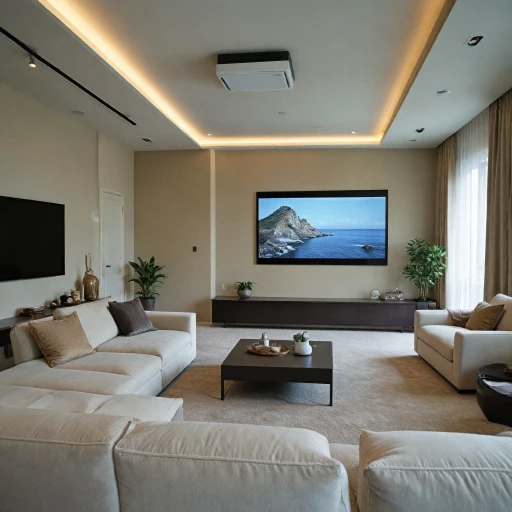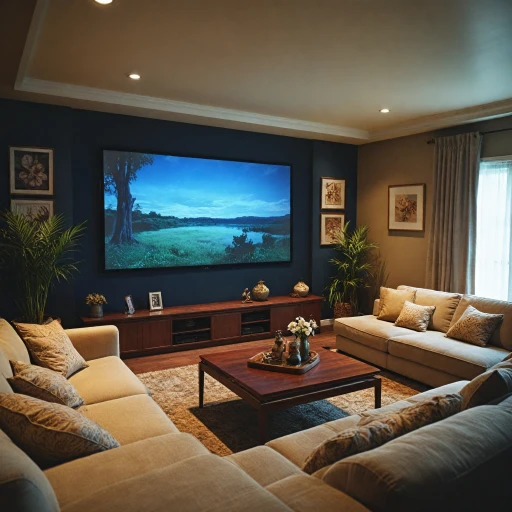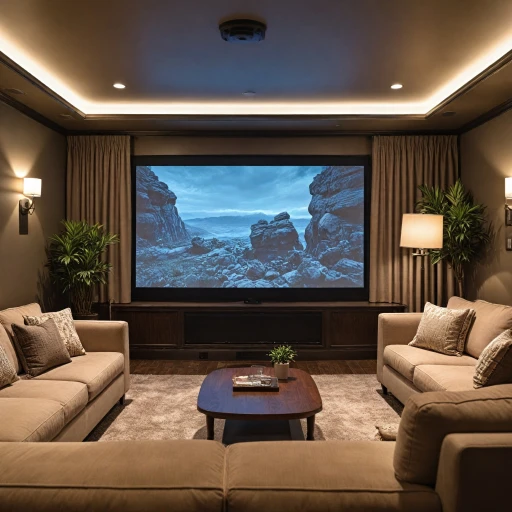Understanding Wall-Mounted Movie Screens
Exploring the Variety of Wall-Mounted Screens
When diving into the realm of home theater setups, one can't overlook the integral role of choosing the right material for your projector screen. Wall-mounted movie screens are a popular choice for both their practicality and aesthetic appeal. These screens serve as the canvas for your visual entertainment, and understanding their nuances can significantly enhance your viewing experience.
Wall-mounted screens come in various types, each catering to different needs and preferences. Whether you're aiming for a fixed frame screen or a more flexible, manual option, there's something for every space. Let's break down some of the popular choices:
- Fixed Frame Screens: These projector screens are celebrated for their stability and sleek design. They often feature an edge-to-edge viewing area, sometimes with a black border to improve contrast. They're ideal for dedicated home theaters.
- Manual Pull-Down Screens: If your space requires more range of use or needs to be multi-purpose, these screens offer a perfect solution. They are easy to deploy and retract, without the need for constant installation adjustments.
- Tab Tensioned Screens: For those who want a smoother surface and want to avoid creases over time, the tab tensioned screen ensures a flat viewing area, providing an optimal projection surface.
When considering a screen, factors such as screen gain, price range, and size are crucial. Brands like Draper and Elite Screens offer a variety of options tailored to different viewing environments and projector types. Whether you opt for a matt white, HDTV matt, or matte white finish, the texture and color can drastically influence your projector's output quality.
Ultimately, understanding these facets will lead to informed decisions that not only enhance your current setup but also future-proof your home theater for coming advancements in projector technology and manufacturing. By investing in the right wall-mounted screen, you're setting a foundation for cinematic experiences right from the comfort of your home.
Benefits of a Wall-Mounted Movie Screen
Why a Wall-Mounted Screen is Worth Considering
There’s no denying that a wall-mounted movie screen offers a multitude of advantages for movie enthusiasts and avid gamers. Here’s why slowing down to understand the benefits of this setup can dramatically enhance your home theater experience:
- Space Efficiency: One of the primary attractions of a wall-mounted setup is its space-saving nature. Unlike portable or stand-alone screens, a wall-mounted unit neatly resides on your wall, leaving the floor uncluttered, creating an organized theater atmosphere.
- Consistency in Sight Line: With a fixed frame projector screen, viewers enjoy a stable and consistent viewing angle, essential for optimal picture quality. Short throw projectors, combined with this setup, ensure a truly immersive experience.
- Excellent Picture Quality: A fixed frame ensures a tensioned surface, important for eliminating any ripples or imperfections that may disrupt the image clarity. Pair it with a matte white or hdtv matt screen surface to enhance picture sharpness and color vibrancy.
- Durability and Longevity: Wall-mounted screens are built to last with robust materials that resist wear and tear over time. Brands like Elite Screens and Draper offer sturdy options with free shipping, ensuring an accessible investment with lasting value.
- Wide Range of Options: Whether you opt for a luma matt or an elite inch projector setup, these screens come in a variety of sizes and price ranges. The inclusion of gain control and tab tensioned designs provide further customization for both bright and dimly lit rooms.
In the stage of choosing the right screen, consider the features that cater to your specific projection needs. For an adept understanding of material choices, explore detailed advice on choosing the right material for your projector screen.
Choosing the Right Screen for Your Space
Finding the Perfect Fit for Your Media Room
When selecting a wall-mounted movie screen to enhance your home theater experience, it's important to consider several factors that can significantly impact the performance of your projector and, ultimately, your viewing satisfaction. Let's take a closer look at some key considerations when choosing the right screen for your space.
- Size Matters: The size of the screen is a vital factor that depends on the dimensions of your room and the projection capabilities of your projector. A common mistake is to choose a screen that's either too large or too small for the available space. Measure your wall where the screen will be mounted and match it with your projector's capabilities.
- Gain and Material: The gain of a projector screen affects its brightness and viewing angle. High-gain screens, like some from Elite Screens, provide a brighter image, but can narrow the viewing angle. Opt for matt white materials, such as those from Draper Luma, for a balanced performance that works in varied lighting conditions.
- Fixed vs. Manual: Decide between a fixed frame screen or a manual pull-down version. Fixed frame screens are ideal for dedicated theater rooms, offering a seamless look, while manual screens, such as those providing free shipping deals, provide flexibility and space-saving options if your setup requires retractability.
- Compatibility with Projector Type: Ensure your screen is compatible with your projector type, whether it's an HDTV matt finish or a short throw projector. Selecting a matt white screen or a tab tensioned variant can enhance projection quality.
- Budget and Brand Considerations: While the price can vary significantly, it's essential to compare features. Brands like Draper and Elite offer competitive choices with quality finishes, ensuring durability and value for money, even if you prioritize budget considerations over premium features.
Carefully evaluating these elements will help you tailor your viewing experience to your specific needs and ensure that your investment in a wall-mounted movie screen truly elevates your home theater experience.
Installation Considerations
Essential Steps for Proper Installation
Installing a wall-mounted movie screen for your home theater involves several crucial steps to ensure optimal performance and safety. Here’s a guide to help you navigate the process:- Select the Best Wall Location:
- Choose a flat, unobstructed wall that provides enough width and height for your desired screen size, whether it’s an inch projector or a larger theater screen.
- Ensure no direct light sources from windows or lamps will interfere with the projection.
- Gather Appropriate Tools and Supplies:
- Depending on the screen type, tools may include a drill, level, tape measure, and screwdrivers.
- Make sure you have all necessary hardware provided with the screen, such as brackets for fixed frame screens or screws for manual tensioned systems.
- Assess Screen Height and Viewing Angle:
- Align the screen such that its center is at eye level when seated, ensuring comfortable viewing.
- A projection screen mounted too high or too low can strain viewers’ necks and diminish the theater experience.
- Affix the Screen Securely:
- Use appropriate wall fasteners that can support the weight of your specific screen type, considering screens can vary widely from lightweight manual projection screens to heavier tab tensioned models.
- For a matt white or draper luma style curtain, check that the roll is smooth and extends without obstruction.
- Check the Stability:
- After installation, test the screen’s stability by gently pulling and releasing several times.
- Ensure the frame projector screen doesn't wobble or tilt, which could indicate insufficient securing.
- Fine-Tune the Alignment:
- Use the projector to adjust the image to fit neatly within the screen’s boundaries without overlap, whether it’s a short throw or a traditional setup.
- Modify the projector’s keystone settings if necessary to maintain perfect picture geometry.
Maintenance and Care Tips
Cleaning and Preserving Your Movie Screen
Taking good care of your wall-mounted movie screen is crucial to maintaining a pristine viewing experience. With proper maintenance, your screen will deliver optimum performance for years. Here's how you can ensure its longevity:
- Regular Cleaning: Dust and debris can accumulate on your screen, especially if it is a white, matte, or hdtv matt finish. Use a soft, lint-free cloth to gently wipe the surface. Avoid using harsh chemicals that might damage the material.
- Protection from Direct Sunlight: Direct exposure to sunlight can fade the colors and degrade the material over time. Consider positioning your screen away from direct sunlight or using drapes to protect it.
- Handling Repairs: If your fixed frame or manual screen shows signs of wear, address minor repairs immediately to prevent further damage. Consult the manufacturer for guidance on dealing with specific issues like screen tearing or frame adjustments.
- Adjusting Gain and Tension: Over time, the gain and tension of your projection screen may need readjustment to ensure clarity and stability. Check if your model includes a tab tensioned feature or requires manual adjustments for maintaining tension over time.
- Storage and Shipping: If you need to move or store your screen, follow the manufacturer’s instructions to avoid damaging the projection surface or the frame. Using the original packaging can help protect it during shipping or long-term storage.
By following these maintenance tips, you can enjoy a high-quality viewing experience from your projector screens, much like those from Draper, Elite Screens, and other leading brands, without the added replacement costs.
Common Challenges and Solutions
Troubleshooting Common Issues with Wall-Mounted Screens
When investing in a wall-mounted movie screen for your home theater, several challenges might surface. Here’s a guide to help you troubleshoot and find solutions to common issues you might face.- Screen Alignment Problems:
- Wrinkles and Waves in Fabric:
- Image Clarity and Brightness Issues:
- Projection and Screen Size Compatibility:
- Screen Cleanliness and Maintenance Issues:

